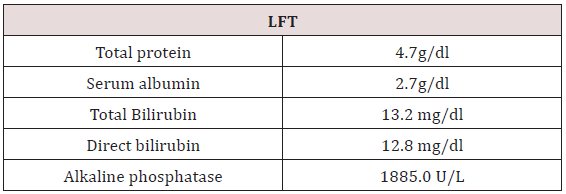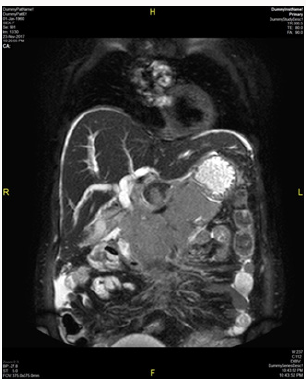Tuesday, September 17, 2019
Lupine Publishers: About Lupine Publishers
Lupine Publishers: About Lupine Publishers: About Lupine Publishers Lupine Publishers is one of the world’s largest open access publisher of peer-reviewed, fully peer reviewe...
Monday, September 16, 2019
Lupine Publishers: Lupine Publishers | Role of Visco-Supplementation ...
Lupine Publishers: Lupine Publishers | Role of Visco-Supplementation ...: Lupine Publishers | Journal of Orthopaedics Abstract Introduction: Cartilage lesions pose a significant problem to surgeons, a...
Saturday, September 14, 2019
Lupine Publishers: Lupine Publishers | Theoretical Study of Movements...
Lupine Publishers: Lupine Publishers | Theoretical Study of Movements...: Lupine Publishers | Journal of Textile and Fashion Designing Abstract The article considered mathematical model that describes t...
Friday, September 13, 2019
Lupine Publishers | Central Nervous System Manifestation of Multiple Myeloma: A Case Report
Lupine Publishers | Open Access Journal of Oncology and Medicine
Abstract
Keywords: Central nervous system, Multiple myeloma
Case Report
In view of persistent pain in legs MRI dorsal spine was done which reported well defined altered intensity expansile lesion in L3 vertebra extending into epidural space. She received palliative external beam radiotherapy to L3 vertebra 30Gy/10 fractions. She remained asymptomatic for a month. Then she presented with complaint of lower limbs weakness and nausea, loss of appetite, constipation, weight loss (Table 2). USG whole abdomen was done which reported multiple hypoechoic masses in epigastric region. Whole body PET CT reported metabolically active soft mass lesion in gastro hepatic region measuring 9.7x5.5 cm SUV max 20.3, recto uterine pouch measuring 9.2 x 7.8cm SUV 20.9, left iliac fossa measuring 7.2x4.0cm- ?mitotic, metabolically active mesenteric nodes measuring upto 2.2cm-? mitotic and metabolically active lytic lesion involving L3 vertebra with paravertebral soft tissue component infiltrating left psoas muscles.
To confirm the diagnosis CT guided core needle biopsy from supraumbilical mass was done which was compatible with multiple myeloma. She then received 1st cycle of Bortezomib, cyclophosphamide and dexamethasone. After few days, she developed headache, giddiness and syncopal attacks. On evaluation CEMRI brain reported diffuse leptomeningeal enhancement involving both cerebral as well as cerebellar hemispheres. Mild enhancement of basal cistern with associated marginal dilation of ventricular system (Figure 1). In view of above mentioned complaints, cerebrospinal fluid study was done (Table 3) (Figure 2). CEMRI spine was done which reported no abnormal enhancement in vertebra, cord or thecal sac (Figures 3 & 4). She received 7 fractions (14 Gy) out of 12 planned fractions (24Gy) of whole brain radiotherapy and two intra thecal injection of methotrexate. MRI upper abdomen with MRCP reported large mass replacing entire head and body region of pancreas. Mass encases and compresses CBD with mild bilobar intra hepatic biliary radical dilation. There is also encasement of second part of duodenum with possible infiltrartion of adjacent hepatic parenchyma as well. Features are suggestive of aggressive pancreatic malignanacy, possibility of pancreatic lymphoma. Thickening and edema of gall bladder wall was seen which was suggestive of concomitant cholecystitis. She was advised for ERCP with SEMS placement which was refused by attendants (Figure 5). In view of her deranged liver function test, both radiotherapy and methotrexate were discontinued and she was maintained on supportive care (Table 4).
Discussion
Conclusion
For more Lupine Publishers Open Access Journals Please visit our website:
http://lupinepublishers.us/
For more Open Access Journal of Oncology and Medicine Please Click Here:
https://lupinepublishers.com/Cancer-journal/
To Know More About Open Access Publishers Please Click on Lupine Publishers
Lupine Publishers: Lupine Publishers | A Combined Material Substituti...
Lupine Publishers: Lupine Publishers | A Combined Material Substituti...: Lupine Publishers | Journal of Textile and Fashion Designing Abstract This paper empirically presents a batik produ...
Thursday, September 12, 2019
Lupine Publishers: Lupine Publishers | Journal of OrthopaedicsAbstr...
Lupine Publishers: Lupine Publishers | Journal of Orthopaedics
Abstr...: Lupine Publishers | Journal of Orthopaedics Abstract Go to Introduction: Cartilage lesions pose a significant problem to su...
Abstr...: Lupine Publishers | Journal of Orthopaedics Abstract Go to Introduction: Cartilage lesions pose a significant problem to su...
Wednesday, September 11, 2019
Lupine Publishers: Lupine Publishers | Green Revolution as Technologi...
Lupine Publishers: Lupine Publishers | Green Revolution as Technologi...: Lupine Publishers- Environmental and Soil Science Abstract The beginning of Human being’s effort to meet the need f...
Tuesday, September 10, 2019
Lupine Publishers: Lupine Publishers | The Elemental Composition of S...
Lupine Publishers: Lupine Publishers | The Elemental Composition of S...: Lupine Publishers- Environmental and Soil Science Annotation Studying the macro- and microelement composition of the...
Monday, September 9, 2019
Lupine Publishers: Lupine Publishers | Injury Profile and Risk Factor...
Lupine Publishers: Lupine Publishers | Injury Profile and Risk Factor...: Lupine Publishers| Orthopedics and Sports Medicine Abstract Background: High competitive level judo practice from a very youn...
Friday, September 6, 2019
Lupine Publishers: Lupine Publishers | Forced Traction: An Error
Lupine Publishers: Lupine Publishers | Forced Traction: An Error: Lupine Publishers | Journal of Veterinary Science Introduction Immediate cause of dystocia requires certain preparations an...
Lupine Publishers: Lupine Publishers | Effect of Environment on Secon...
Lupine Publishers: Lupine Publishers | Effect of Environment on Secon...: Lupine Publishers- Environmental and Soil Science Abstract Medicinal plants constitute main resource base of almost all...
Lupine Publishers: Sub-Soil Properties of Hydrocarbon Contaminated Si...
Lupine Publishers: Sub-Soil Properties of Hydrocarbon Contaminated Si...: Lupine Publishers- Environmental and Soil Science Abstract This study aims at assessing the subsurface soil properties of conta...
Subscribe to:
Comments (Atom)
Lupine Publishers | Open Access Journal of Oncology and Medicine (OAJOM)
Thanksgiving is a national holiday celebrated on various dates in the United States, Canada, Grenada, Saint Lucia, and Liberia. ...

-
Lupine Publishers | Open Access Journal of Oncology and Medicine Introduction The study of complex systems and investigation of th...
-
Lupine Publishers | Open Access Journal of Oncology and Medicine Abstract Diffuse large B cell lymphoma (DLBCL) is the most c...
-
Thanksgiving is a national holiday celebrated on various dates in the United States, Canada, Grenada, Saint Lucia, and Liberia. ...











